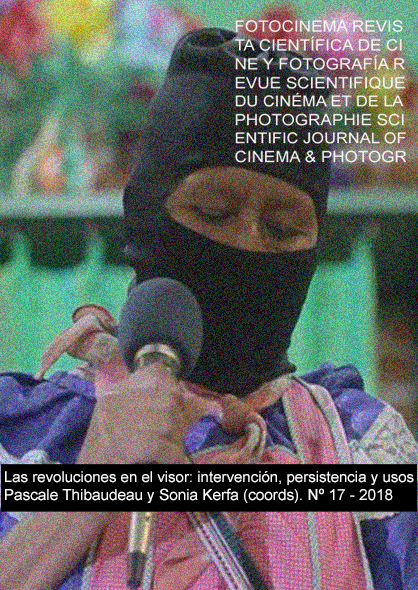Chaplin and Cantinflas get serious. The final speeches of The great dictator and Su excelencia
DOI:
https://doi.org/10.24310/Fotocinema.2018.v0i17.5118Keywords:
Charles Chaplin, Cantinflas, The Great Dictator, Su Excelencia, Comedy, Political Satire, ParodyAbstract
In The Great Dictator (1940) and Su Excelencia (1966), Charles Chaplin and Mario Moreno, Cantinflas, respectively, satirize the desire of power of leaders of great Nations. The first denounces the Europe of fascisms, especially the nazi Germany; and the second, the world of the Cold War, fundamentally the two superpowers of the time: the US and the USSR. Despite its comic nature, the two films end with two quite serious speeches in which their protagonists make a similar appeal in favor of freedom, peace and the brotherhood of all men. This article delves into the similarities of the two allegations, which are based on the same situation: a common citizen temporarily become a great political leader –by confusion or some bizarre circumstances–, who will have to make a serious decision of which depend on the fate of humanity.
Downloads
Metrics
Publication Facts
Reviewer profiles N/A
Author statements
Indexed in
-
—
- Academic society
- N/A
- Publisher
- Universidad de Málaga
References
Álvarez, L. A. (1990). Los 50 años de El Gran Dictador: las dos caras de Chaplin. Credencial Historia, 3, marzo de 1990, http://www.banrepcultural.org/node/32716 (27/04/2016).
Andrade, R. (1994). El perfil de la quimera. Tema y variaciones de literatura, 3. México, D. F.: UAM, Unidad Azcapotzalco, División de Ciencias Sociales y Humanidades, pp. 71-88. (Artículo de 1951), http://zaloamati.azc.uam.mx/bitstream/handle/11191/1346/El_%20perfil_de_la_quimera_no_3.pdf?sequence=1 (15/01/2016).
Bartra, R. (2005). La jaula de la melancolía. Identidad y metamorfosis del mexicano. México, D. F.: Debolsillo.
Britto García, L. (2000). Elogio del panfleto y de los géneros malditos. Mérida, Venezuela: El Libro de Arena.
McDonald, G.; Conway, M. y Ricci, M. (1995). Todas las películas de Charlie Chaplin. Barcelona: Odín.
Monsiváis, C. (2011). Mario Moreno, 1911-1993. La imagen perdurable y los momentos momentáneos. En Los ídolos a nado. Barcelona: Debate.
Ramos, S. (1977). El perfil del hombre y la cultura en México. México, D. F.: Espasa Calpe Mexicana. (7ª edición; la 1ª, de 1951).
Santovenia, R. (2011). Cantinflas, genio del galimatías. Bolpress.com, 3 de marzo de 2011, http://www.bolpress.com/art.php?Cod=2011031704 (15/01/2016).
Villegas López, M. (1978). Charles Chaplin. El genio del cine. Barcelona: Planeta.
Downloads
Additional Files
Published
How to Cite
Issue
Section
License
All contents published in Fotocinema Revista científica de cine y fotografía are protected under the Creative Commons Attribution-NonCommercial-ShareAlike 4.0 International (CC BY-NC-SA 4.0) license. All about this license is available in the following link: <http://creativecommons.org/licenses/by-nc-sa/4.0>
Users can copy, use, redistribute, share and exhibit publicly as long as:
- The original source and authorship of the material are cited (Journal, Publisher and URL of the work).
- It is not used for comercial purposes.
- The existence of the license and its especifications are mentioned.
There are two sets of authors’ rights: moral and property rights. Moral rights are perpetual prerogatives, unrenounceable, not-transferable, unalienable, imprescriptible and inembargable. According to authors’ rights legislation, Fotocinema. Revista científica de cine y fotografía recognizes and respects authors moral rights, as well as the ownership of property rights, which will be transferred to University of Malaga in open access. The property rights are referred to the benefits that are gained by the use or the dissemination of works. Fotocinema. Revista científica de cine y fotografía is published in an open access form and it is exclusively licenced by any means for doing or authorising distribution, dissemination, reproduction, , adaptation, translation or arrangement of works.
Authors are responsable for obtaining the necessary permission to use copyrighted images.














13.png)



